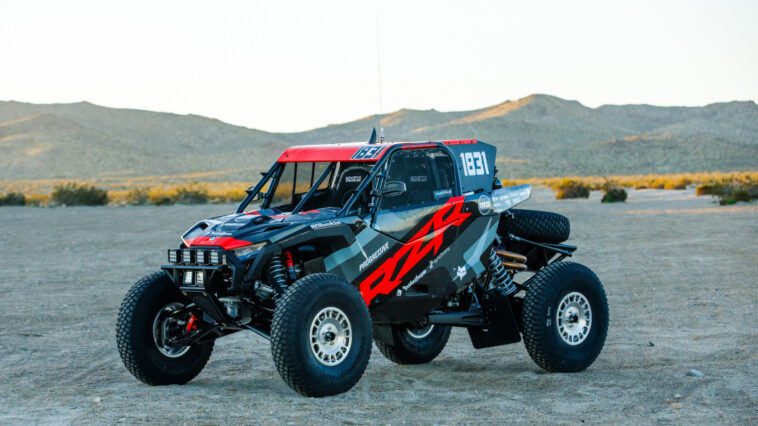Two beastly machines emerged from the mad-science realms of the UTV world final 12 months: Can-Am’s Maverick R3 and Polaris’ RZR Professional R Manufacturing facility. Minnesota outfit Polaris launched the latter because the chosen rig for an industry-first factory-backed race group, and it received out of the gate. Crew driver Brock Heger received three of the 4 races within the SCORE sequence, together with the Baja 1000, driving off with the sequence’ Professional UTV Open Class Championship and getting Polaris the Producer’s Championship. Shifting into this 12 months, a modified model of the first-gen Professional R Manufacturing facility received its class on the Dakar Rally as a part of Sebastien Loeb Racing, then Heger piloted the usual manufacturing facility rig to victory within the Desert Race on the King of the Hammers. For this weekend’s San Felipe 250, the primary race in SCORE’s 2024 schedule, Polaris launched the second-gen RZR Professional R Manufacturing facility, improved with experience and elements from car-based motorsports.
It began with a brand new one-piece roll cage. Based mostly on driver suggestions, Polaris engineered a brand new tube-frame cell to be lighter, stiffer, stronger and roomier, then enlisted North Carolina agency Approach Chassis to construct the cage — the identical Approach that builds each body for each NASCAR Cup Sequence automobile. Approach additionally manufactures the brand new, detachable entrance and rear bumpers to make “nerfing” simpler, the act of bumping a competitor in entrance to get them out of the way in which so a quicker rig can go. The Gen 2 additionally will get just a few extra lights on the entrance bumper, and the rear unit’s been reshaped to seat the spare wheel at a a lot shallower angle. When it comes time to tug that spare, engineers upgraded the mounts for it, the jack and the instrument kits to face as much as race-pace repairs.
Polaris did not contact the mechanicals on the coronary heart of the ProStar Fury 2.0-liter four-cylinder. A brand new Motec ECU oversees efficiency parameters, a brand new Motec energy distribution field and swap panel develop the configuration choices. ProStar energy will get transferred down a brand new, lighter, carbon fiber and aluminum prop shaft that may endure extra torque, ProStar emissions run by a brand new Polaris-designed muffler that maintains energy whereas limiting quantity at excessive revs. And a bigger gas cell from ATL extends the gap between pit stops to as a lot as 200 miles.
A brand new, returned Dynamix suspension management module works the Fox 3.0 Stay Valve X2 inside bypass shocks and new, stronger, extra adjustable higher management arms. Satisfying one other driver request, the module presents 4 driving modes: Consolation, Baja Delicate, Baja Medium and Baja Agency.
Stopping energy in excessive warmth and high-use conditions sees a giant improve with an Alcon racing brake system that bolts on two grasp cylinders and opposed-piston calipers clamping Alcon rotors. To maintain the Gen 2’s weight near that of the first-gen manufacturing facility rig, Polaris used extra carbon fiber physique panels.
It isn’t all spendy new elements, although. Polaris saying the engine, complete CVT, entrance and rear drive models, CV joints, decrease management arms, knuckles and trailing arms come from the inventory rig.
Based mostly on early outcomes, the Gen 2 RZR Professional R Manufacturing facility maintains its stranglehold on SCORE races. On the time of writing, the unofficial San Felipe 250 outcomes web page exhibits manufacturing facility drivers Brock Heger and Cayden MacCachren ending first and second in-class, respectively, group driver Max Eddy, Jr. ending fourth.
Associated video:

